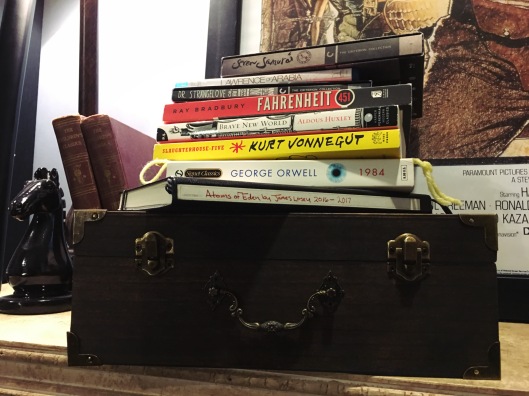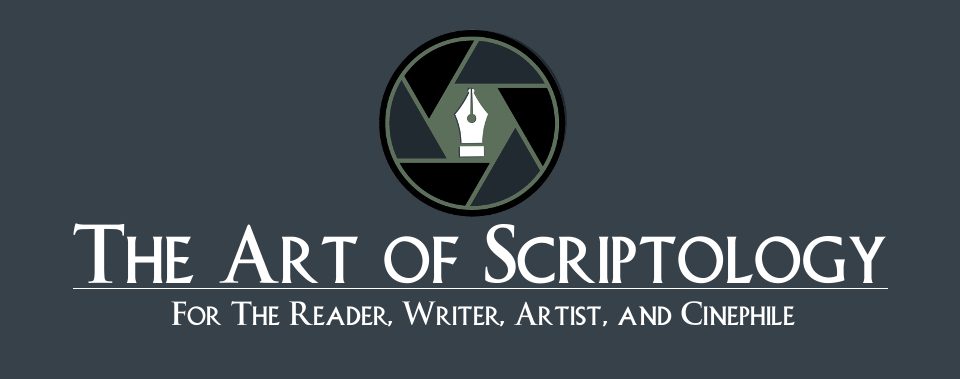Tags
3 Act Structure, Books, Cinema, Criterion Collection, Directing, Director's Log, Film, Filmmaking, Indie Filmmaking, Leuchtturm1917, moviemaking, Movies, My Creative Writing Process, Pencils, Screenwriting, Screenwriting Process, writing, Writing Process

In my on going series I would like to share my creative process and how I develop ideas for my screenplays, specifically for my current film that is in development, Atoms of Eden. I covered something similar to this a few years back. You can find it HERE. I thought I would expound upon that article more. So here are the 7 Steps in my creative writing process:
- An Idea: A film is not something that is randomly filmed and thrown onto the big screen. It is a long grueling process to get the picture on the screen and the words on the page. Every film and every story boils down to a little seed of an idea that later blossoms into something fantastic. Every idea must ask the question, “ What if?” It is the spark that ignites our creativity and its endless possibilities. If there is no question to be asked, then there is no question that needs answered, thus eliminating the conflict. Conflict is something that is found in all stories, it is why we care for our heroes during their journey. So I ask the question, “What if?”
- Genre: Once I have asked the question, “What if?” I now must decide the genre of my story. Genre can be very subjective. For instance sci-fi could have multiple sub-genres within itself such as: Fantasy, romance, action, and drama. It is important that I figure out the world where my story will take place because it will affect how I develope my story.
- Research: Research is very crucial to developing my story, it helps me better flesh out my idea. To me, this is the most intriguing part. It does not matter if I am writing a period piece or a fantasy epic, research helps get my creative juices flowing. I go to the bookstore or the library and pick up books related to my genre. If I am writing a sci-fi epic I read classic sci-fi literature, but I also read other books that have nothing to do with the genre of sci-fi.
It is also important to get out and talk to people and experience life. This helps when developing my characters. I get out and talk to people, I go to coffee shops and listen. Everyone has a fascinating story to tell.
Lastly when researching I watch a bunch of movies. I analyze scenes, take notes, review them, and learn their structure. - Notebooks: I keep a notebook with all my ideas. A lot of writers use Moleskines. Moleskines are okay, but I prefer Leuchtturm1917 notebooks. They contain more pages, they are numbered, they have an index, and best of all they are fountain pen friendly. I know, I’m bit of a nerd for all things stationery. You could use a simple spiral bound notebook, but they tend to fall apart after extensive use.
I take my notebook everywhere I go so when an idea strikes I jot it down. I can also put all my research into the notebook so I always have it on hand. If I don’t use some of the ideas for a current project, I could always draw back to them in future projects.
One of my current ongoing projects is a sci-fi/fantasy epic with vast worlds and characters. I break down my notebook into several categories as I brainstorm: Characters, world history, planets, governments, politics, culture, religion, business, factions, technology, and magic. Most of it I won’t use, but it is there if I need it.
I might have a cool world and backstory but I must have likable characters people can root for. I spend most of my time focusing on my character creation. I ask myself: What is their appearance? What are my characters values? What’s most important to them? What’s the most traumatic thing that could happen to them? What is their biggest secret? What is their deepest fear? What’s the best and worst thing that could happen to them? What are their hobbies? Abilities? Favorite music? Family? Answering these questions will help develop conflict. - Outline: After I have my question, genre, research, characters, and world it is very tempting to jump the gun and start writing. Some writers can do that but I cannot. I have to have a roadmap to guide me along. I have to have a beginning and end in mind for my characters and story. An outline helps me do this. I outline by using index cards and a corkboard. I break the story down into three main headings: Act I, Act II, and Act III. Under these main headings I have 10 subheadings under them.
ACT I: Set-Up
- Opening Shot: The opening shot is what introduces the audience to the world. It has to be engaging. It has to hook them.
- Inciting Incident: This is the event that changes the life of the hero forever. It throws their life upside down. It’s an event that sends them on a quest. Perhaps they refuse the call at first, but in the end they accept the quest.
- First Act Break: The story has been set up. The characters have all been introduced and we know what they want. First act break’s involve the first major location change. It’s when our heroes step out into the unknown.
ACT II: Confrontation
- Obstacles: Act II is the longest part of a story/film. It’s the middle of the story and often the most challenging part to write. The hero faces countless obstacles that block him or her from achieving their goal.
- Small Victories: The hero faces small victories and setbacks.
- Subplot: The subplot is a secondary plot that is tangled in with the main plot that affects the characters. Sometimes it is a love story.
- All is Lost: This is where the hero faces extreme setbacks, it appears their goal is impossible. Sometimes this is when a plot twist is revealed…All is lost.
ACT III: Resolution
- Climax: The hero gathers all they have learned on their journey. They have changed for the better and they are ready to face the antagonist in a final showdown.
- Resolution: The hero overcomes the antagonist.
- Final Shot: This is the closing image that wraps up our story. Sometimes it can mirror the opening shot.
Once I have these headings on the corkboard I can begin to fill in the blanks. I write short scene descriptions on each index card then place it on the board. I fill the board up and move cards around till I have a complete outline I am happy with.
- Rough Draft: Once I have brainstormed and outlined everything I write a rough draft, or what I call my, Crap Draft. I don’t type it up on the computer just yet. I write it all out by hand in my notebooks with a pencil. I do the John Steinbeck thing. I have over a dozen pencils sharpened and when one gets dull I move onto the next one. When I write a rough draft I remind myself that this doesn’t have to be perfect. If I spend too much time worrying about grammar and spelling it will never get done. I have to write crap to get to the good stuff.
I also create a schedule to keep me writing. For me, the best time to write is early morning or late at night. Everyone is in bed and it’s quiet. I have a cup of coffee or tea and give myself a few minutes to think before I start writing a single word.
- Editing: After I have written my rough draft I back away from it to get my mind off of it. Then I return to it with a fresh mind. I transcribe my rough draft to the computer. As I type it up I make the corrections along the way. Once I’m finished doing that I make sure every scene propels the story forward. I make sure everyone wants something so there is always conflict. If the scene doesn’t achieve this I cut it or I rewrite it.
After that, I focus only on the action and descriptions. I whittle down giant blocks of text to something that is short, to the point, and flows quickly. Remember, less is more. After I have done this I do a pass on the dialogue. I make sure the dialogue is snappy and propels the story forward. I don’t want my characters rambling on about the weather. I also make sure each line of dialogue is unique to the characters and that every character has a different voice. Sometimes I cut dialogue altogether. I try to make sure I’m showing not telling. I let the audience figure things out. Leave room for some mystery.
Once I have combed through everything I go through it one more time to clean up the loose ends. Once I have done this I am ready to email it to close friends who are also into film to get a second opinion. If everyone is critiquing the same element in the script I sit on it and see how I can correct it. Once I do this I have the final draft. A few days later another idea pops up and the vicious circle starts over again.So, that is it for my writing process. I am no expert, but I hope it was informative, and if you have any questions feel free to ask. I would be more than happy to answer them. Next week I will be doing a Christmas gift guide for writers.
I end with a list of books and movies that inspired me along the way while writing Atoms of Eden.
Books:
- 1984 George Orwell
- Fahrenheit 451 by Ray Bradbury
- Brave New World by Aldous Huxley
- Slaughterhouse-Five by Kurt Vonnegut
- Countless WWII books.
- Mistborn by Brandon Sanderson
- Lord of the Rings by JRR Tolkien
Movies:
- The Revenant
- Seven Samurai
- Three Outlaw Samurai
- Dr. Strangelove: How I Learned to Stop Worrying and Love the Bomb by Stanley Kubrick
- Star Wars
- Lawrence of Arabia
- 10 Cloverfield Lane
- Inglourious Basterds
- Indiana Jones
- Letter Never Sent
Video Games:

